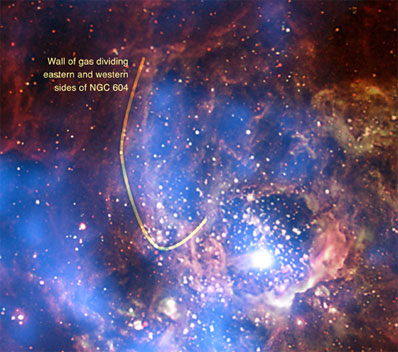


Spaceflight Now +

|

|

|

|

Subscribe to Spaceflight Now Plus for access to our extensive video collections!
 How do I sign up? How do I sign up?
 Video archive Video archive

Carbon observatory

Preview of the Orbiting Carbon Observatory, NASA's first spacecraft dedicated to mapping the global distribution of carbon dioxide.

 Play Play

Expedition 19 crew

The Russian commander and two American astronauts to serve aboard the space station during the Expedition 19 mission hold this pre-flight news briefing.

 Play Play

Delta 4-Heavy launch

The Delta 4-Heavy rocket launches a new intelligence-gathering satellite for the nation.

 Full coverage Full coverage

STS-119: Shuttle on pad

Shuttle Discovery rolls to pad 39A for its February launch to the space station.

 Play Play

STS-119: The programs

In advance of shuttle Discovery's STS-119 mission to the station, managers from both programs discuss the flight.

 Play Play

STS-119: The mission

A detailed preview of Discovery's mission to deliver and activate the space station's final power truss is provided in this briefing.

 Play Play

STS-119: Spacewalks

Four spacewalks are planned during Discovery's STS-119 mission to the station.

 Play Play

STS-119: The Crew

The Discovery astronauts, led by commander Lee Archambault, meet the press in the traditional pre-flight news conference.

 Play Play

Station's new toilet

Space station commander Mike Fincke shows the new U.S. toilet installed aboard the complex. The astronauts are preparing the station for larger crews beginning in 2009.

 Play Play

 Become a subscriber Become a subscriber
 More video More video

|

|

|

|


|

|

Wall divides east and west sides of cosmic metropolis
CHANDRA X-RAY CENTER NEWS RELEASE
Posted: January 31, 2009
A new study unveils NGC 604, the largest region of star formation in the nearby galaxy M33, in its first deep, high-resolution view in X-rays. This composite image from Chandra X-ray Observatory data (colored blue), combined with optical light data from the Hubble Space Telescope (red and green), shows a divided neighborhood where some 200 hot, young, massive stars reside.

Credit: X-ray: NASA/CXC/CfA/R. Tuellmann et al.; Optical: NASA/AURA/STScI
|
Throughout the cosmic metropolis, giant bubbles in the cool dust and warm gas are filled with diffuse, multi-million degree gas that emits X-rays. Scientists think these bubbles are generated and heated to X-ray temperatures when powerful stellar winds from the young massive stars collide and push aside the surrounding gas and dust. So, the vacated areas are immediately repopulated with the hotter material seen by Chandra.
However, there is a difference between the two sides of this bifurcated stellar city. (Rollover the image above or view this separate annotated image for the location of the "wall".) On the western (right) side, the amount of hot gas found in the bubbles corresponds to about 4300 times the mass of the sun. This value and the brightness of the gas in X-rays imply that the western part of NGC 604 is entirely powered by winds from the 200 hot massive stars.
This result is interesting because previous modeling of other bubbles usually predicted them to be fainter than observed, so that additional heating from supernova remnants is required. The implication is that in this area of NGC 604, none or very few of the massive stars must haveexploded as supernovas.
The situation is different on the eastern (left) side of NGC 604. On this side, the X-ray gas contains 1750 times the mass of the sun and winds from young stars cannot explain the brightness of the X-ray emission. The bubbles on this side appear to be much older and were likely created and powered by young stars and supernovas in the past.
A similar separation between east and west is seen in the optical results. This implies that a massive wall of gas shields the relatively quiet region in the east from the active star formation in the west.
This study was led by Ralph Tuellmann of the Harvard Smithsonian Center for Astrophysics and was part of a very deep, 16-day long observation of M33 called the Chandra ACIS Survey of M33, or ChASeM33.

Credit: X-ray: NASA/CXC/CfA/R. Tuellmann et al.; Optical: NASA/AURA/STScI
|
|

|

|

|

|




